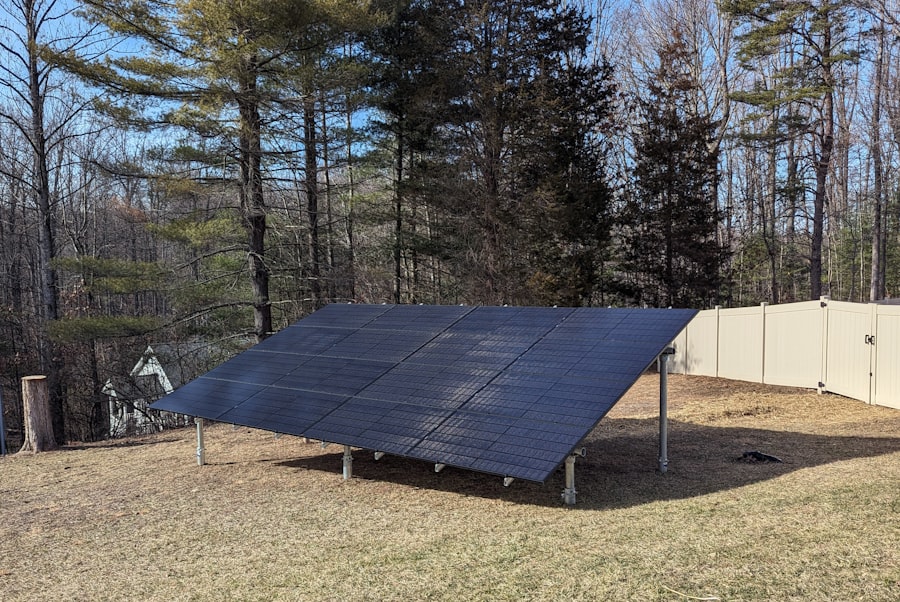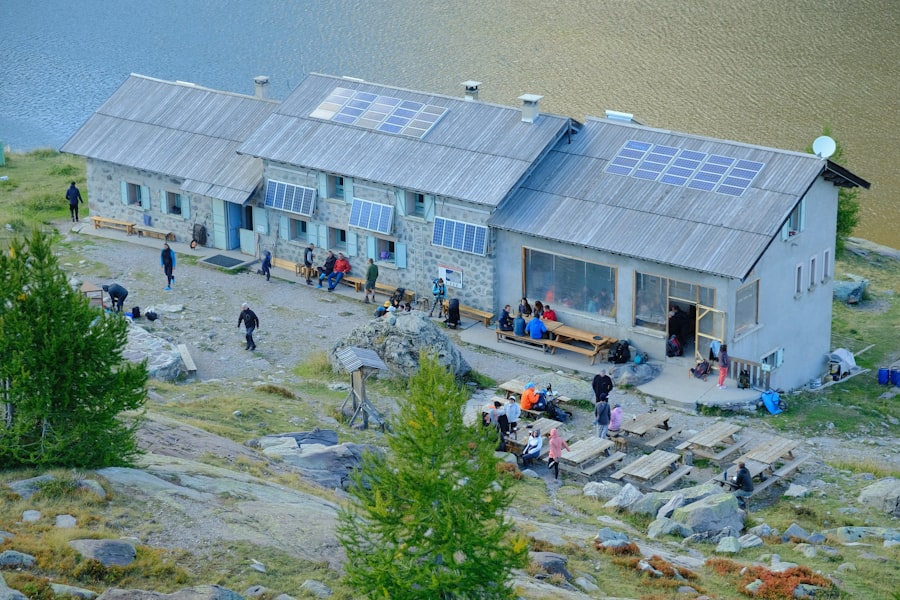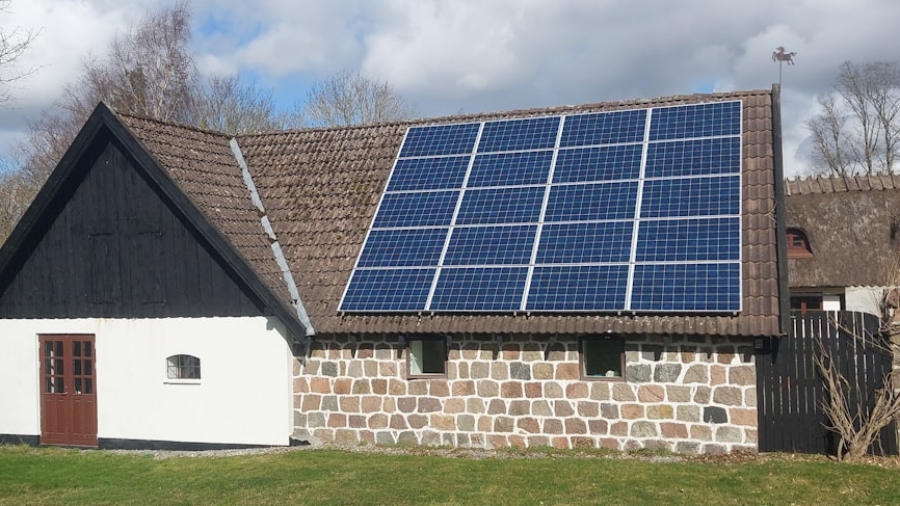Community solar programs represent a transformative approach to renewable energy, allowing individuals and organizations to participate in solar energy generation without the need for personal solar panel installations. These programs enable multiple participants to invest in or subscribe to a shared solar array, typically located off-site, which generates electricity that is then distributed to the grid. This model democratizes access to solar energy, making it possible for those who may not have suitable rooftops, financial resources, or the ability to install solar panels to benefit from clean energy.
As the world grapples with climate change and seeks sustainable energy solutions, community solar programs have emerged as a viable pathway toward a more inclusive and environmentally friendly energy landscape. The rise of community solar can be attributed to several factors, including technological advancements in solar energy, decreasing costs of solar installations, and growing public awareness of climate issues. These programs not only provide an avenue for individuals to reduce their carbon footprint but also foster community engagement and collaboration.
By pooling resources and sharing the benefits of solar energy, communities can work together to achieve energy independence and resilience. As more states and municipalities recognize the potential of community solar, the landscape of renewable energy is evolving, paving the way for broader participation in the transition to a sustainable future.
Key Takeaways
- Community solar programs allow multiple participants to benefit from a shared solar energy system, even if they cannot install solar panels on their own property.
- The benefits of community solar programs include cost savings, environmental impact, and increased access to renewable energy for low-income communities.
- Community solar programs work by allowing participants to subscribe to a portion of a shared solar project and receive credits on their electricity bills for the power produced.
- Barriers to access for community solar programs include financial constraints, lack of awareness, and regulatory challenges, but these can be overcome with proper policies and outreach efforts.
- Successful examples of community solar programs include projects in Colorado, Minnesota, and New York, which have demonstrated the potential for widespread adoption and impact.
The Benefits of Community Solar Programs
Community solar programs offer a multitude of benefits that extend beyond mere access to renewable energy. One of the most significant advantages is the economic savings they provide. Participants in community solar programs often enjoy reduced electricity bills, as they receive credits for the energy produced by the shared solar array.
This financial incentive can be particularly impactful for low- and moderate-income households, which may struggle with high energy costs. By lowering monthly utility expenses, community solar can alleviate some of the financial burdens faced by these families, allowing them to allocate resources toward other essential needs. In addition to economic benefits, community solar programs contribute to environmental sustainability.
By increasing the adoption of solar energy, these initiatives help reduce reliance on fossil fuels, thereby decreasing greenhouse gas emissions and air pollution. The collective impact of numerous community solar projects can lead to significant reductions in carbon footprints at both local and national levels. Furthermore, community solar fosters a sense of ownership and responsibility among participants, encouraging them to engage in other environmentally friendly practices.
This heightened awareness can lead to broader community initiatives aimed at sustainability, such as energy efficiency programs and waste reduction efforts.
How Community Solar Programs Work

The operational framework of community solar programs is designed to facilitate participation from a diverse range of individuals and organizations. Typically, a community solar project is developed by a third-party company or a local government entity that constructs a solar array in a suitable location. Once the array is operational, participants can subscribe to a portion of the energy produced by the system.
This subscription model allows individuals to benefit from solar energy without needing to install panels on their properties. Participants usually pay a subscription fee or make an upfront investment in the project, which can vary based on the program’s structure. In return, they receive credits on their utility bills corresponding to their share of the energy generated by the solar array.
These credits are applied directly to their electricity usage, effectively reducing their overall energy costs. The specifics of how credits are calculated can differ by state and utility company, but the underlying principle remains consistent: participants gain access to renewable energy while supporting local solar development.
Overcoming Barriers to Access
Despite the numerous advantages of community solar programs, several barriers hinder widespread participation. One significant challenge is the lack of awareness and understanding of how these programs operate. Many potential participants may not be familiar with community solar or may have misconceptions about its feasibility and benefits.
To address this issue, educational campaigns are essential. Local governments, non-profit organizations, and solar developers can collaborate to provide information sessions, workshops, and outreach initiatives that demystify community solar and highlight its advantages. Another barrier is regulatory complexity.
In many regions, policies governing community solar are still evolving, leading to inconsistencies in program availability and structure. Some states have robust frameworks that support community solar development, while others lack clear guidelines or incentives. Advocating for comprehensive policies that streamline the regulatory process can help facilitate the growth of community solar programs.
Additionally, addressing financial barriers is crucial; innovative financing options such as low-interest loans or grants can make participation more accessible for low-income households.
Examples of Successful Community Solar Programs
Several successful community solar programs across the United States serve as models for best practices in this emerging sector. One notable example is the Solar Gardens program in Minnesota, which has gained recognition for its innovative approach to community solar development. Launched in 2013, this program allows residents and businesses to subscribe to local solar gardens that generate clean energy for their communities.
The program has successfully engaged thousands of participants and has become a blueprint for similar initiatives nationwide. Another exemplary program is Colorado’s Community Solar Gardens initiative, which was established in 2010. This program enables subscribers to purchase shares in community solar projects located throughout the state.
Colorado’s approach emphasizes inclusivity by ensuring that low-income households have access to affordable subscription options. The program has seen significant growth over the years, with numerous projects coming online and providing clean energy to thousands of residents while fostering local economic development through job creation in the renewable energy sector.
The Impact of Community Solar on Low-Income Communities

Community solar programs hold particular promise for low-income communities that often face barriers to accessing renewable energy resources. Many low-income households live in rental properties or homes with unsuitable roofs for solar installations, making traditional residential solar options impractical. Community solar provides an alternative by allowing these households to participate in shared solar projects without needing physical infrastructure on their properties.
The impact of community solar on low-income communities extends beyond financial savings; it also promotes social equity and environmental justice. By enabling access to clean energy resources, these programs help mitigate energy poverty—a condition where households struggle to afford basic energy needs—while simultaneously reducing reliance on fossil fuels that disproportionately affect marginalized communities through pollution and health risks. Furthermore, many community solar initiatives incorporate workforce development components that train local residents in renewable energy skills, creating job opportunities and fostering economic empowerment within these communities.
Policy Recommendations for Expanding Community Solar Programs
To maximize the potential of community solar programs and ensure equitable access for all communities, several policy recommendations should be considered.
This includes creating standardized guidelines for project approval processes and ensuring that utilities are incentivized to facilitate community solar participation.
Additionally, financial incentives such as tax credits or grants can encourage investment in community solar projects while lowering costs for participants.
Collaborations between government agencies, non-profits, and private sector stakeholders can enhance these outreach initiatives and ensure that information reaches those who stand to benefit most.
Finally, integrating community solar into broader renewable energy goals at both state and federal levels can help create a cohesive strategy for expanding access to clean energy resources. By aligning community solar initiatives with climate action plans and renewable portfolio standards, policymakers can reinforce the importance of inclusive energy solutions that address both environmental sustainability and social equity.
The Future of Community Solar Programs
The future of community solar programs appears promising as more states recognize their potential for fostering sustainable energy practices while promoting social equity. As technology continues to advance and costs decline further, we can expect an increase in innovative financing models that make participation more accessible for diverse populations. The integration of battery storage solutions into community solar projects may also enhance their viability by allowing participants to store excess energy generated during peak production times for later use.
Moreover, as climate change becomes an increasingly pressing global issue, public demand for renewable energy solutions will likely drive further investment in community solar initiatives. Local governments may prioritize these programs as part of their climate action strategies, recognizing their role in reducing greenhouse gas emissions while simultaneously addressing economic disparities within communities. In conclusion, community solar programs represent a significant step toward democratizing access to renewable energy resources while fostering environmental sustainability and social equity.
As these initiatives continue to evolve and expand across various regions, they hold the potential not only to transform local energy landscapes but also to empower communities in their pursuit of a cleaner and more equitable future.
In the quest to democratize clean energy, community solar programs have emerged as a pivotal solution, enabling broader access to renewable energy sources. These programs allow individuals and businesses to invest in or subscribe to a portion of a solar farm, thereby reducing their carbon footprint and energy costs without the need for personal solar panel installations. A related article that delves into the broader context of technological advancements and their impact on consumer choices is available on CNET. This article, titled “CNET Tracks All the Latest Consumer Technology Breakthroughs,” explores how innovations in technology are reshaping various sectors, including energy. You can read more about these technological advancements by visiting


